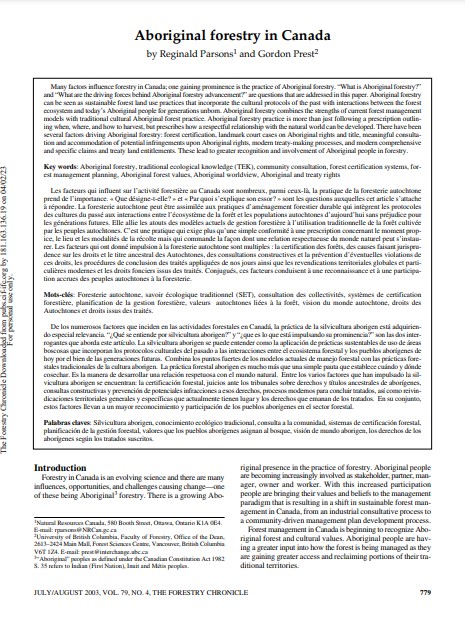Aboriginal Forestry in Canada.
Bosque Modelo:
Waswanipi Cree
Temática:
Desarrollo humano
Tipo de documento:
Artículo científico
Resumen
Many factors influence forestry in Canada; one gaining prominence is the practice of Aboriginal forestry. “What is Aboriginal forestry?” and “What are the driving forces behind Aboriginal forestry advancement?” are questions that are addressed in this paper. Aboriginal forestry can be seen as sustainable forest land use practices that incorporate the cultural protocols of the past with interactions between the forest ecosystem and today’s Aboriginal people for generations unborn. Aboriginal forestry combines the strengths of current forest management models with traditional cultural Aboriginal forest practice. Aboriginal forestry practice is more than just following a prescription outlining when, where, and how to harvest, but prescribes how a respectful relationship with the natural world can be developed. There have been several factors driving Aboriginal forestry: forest certification, landmark court cases on Aboriginal rights and title, meaningful consultation and accommodation of potential infringements upon Aboriginal rights, modern treaty-making processes, and modern comprehensive and specific claims and treaty land entitlements. These lead to greater recognition and involvement of Aboriginal people in forestry.
Información Bibliográfica
Autor:
Parsons, R and G Prest.
Revista:
Forestry Chronicle
Año:
2003
N°:
4
País :
Canadá
Páginas:
779 - 784
Volumen:
79
Idioma:
Ingles
Palabras claves
Aboriginal forestry, traditional ecological knowledge (TEK), community consultation, forest certification systems, forest management planning, Aboriginal forest values, Aboriginal worldview, Aboriginal and treaty rights





